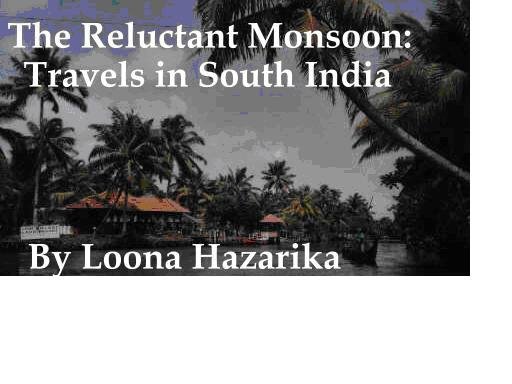Ambalapuzzha :16th May
This morning Jiji brought me a breakfast of coconut pancakes drizzled with jaggary and tea in teapot. In the evenings I am treated to a home-made thaali meal with small bowls of parippu (mixed lentil soup flavoured with tomato and garlic), rasam (peppery lentil broth), kathrika (plantain fritters) and vadai ( small doughnuts made from black lentil batter). For deserts they served me rice noodles, in milk and raisins and always send me to bed with a chilled bottle of mineral water and a mosquito coil. It’s just like living with a family, but with payment.
The Sri Krishna Temple, one of the oldest in Kerala, is a three kilometre walk away. It’s an auspicious time now, a special festival is going on which only happens once every 144 years. Under a glitzy cloth house of tinsel and garlands, priests of all ages and shades of brown, sit in rows bare chested but for a thread. They throw one petal for every Vedic chant which is wired up to loudspeakers so that the auspiciousness of the occasion can be heard by passers-by on the main road. From the size of ridge of fragrant petals in front of them, they have been chanting for quite some days. Inside the temple a man approached me and told me take off my shirt, customary for south Indian temples. I knew this, but I forgot to do it. Spot the tourist!
A boatmen rowed me around the waterways for a day; we passed many houses on the banks of the canals, drifting past branches with chameleons hanging on them like green socks on a clothesline, past flooded paddy fields with embankments of tethered goats, overtaking slower boats carrying mounds of green coconuts and ducking in the boat as we passed under low footbridges. An old lady scraped the scales off a fish on the bankside and she waved at us. Ocassionally a palm matted houseboatm which are air-conditioned floating 5 star hotels, would pass us with a party on board. The children were friendly, they would run along the bank and shout “What country?” and “One pen please!”. A threw a pen at them which started a minor squabble. Pens must be valued, in Kerala primary education is compulsory and the literacy rate is about 95%. The standard of living in Kerala is relatively good too thanks in part to the land reforms of the world’s first elected Communist government.
We passed a grove of coconut trees – apparently more people die from falling coconuts than snake bites in Kerala which literally means “Land of Coconuts”. Inspite of their fatal attraction, the coconut tree is the botanical darling of the Malayalis. Coir is made from the fibres of its husk and used to bind their boats which are made from its wood; from its milk, they make a bubbly white country wine called Toddy which is fermented in earthenware pots up a tree (it is an acquired taste, take my word for it); oil is made from its dried coconut flesh (called copra) and used for massages, cooking and hair. No wonder they call the coconut tree the tree gifted from God but sleep under one at your peril, you could be saying a very personal thank you.
The backwaters are a mix of sea water and freshwater. The Malayali people have learned to channels the water types to best advantage, annually letting the sea water in to their fields to kills off weeds and mosquito larvae.
Up ahead two brass vases were bobbing and spinning of their own accord. As we neared them, shrivelled pink fingertips appeared on them and the heads of two old ladies appeared in the water – they were wading for shellfish. A nearby factory heats and crushes the shells to make a white powder, as fine as talcum, which is used as a lime for cement, paintwash and paan.
We berthed in Champakulum a waterlogged village with an ancient church built in 427AD. St Thomas the Apostle is said to have brought Christianity to these shores just after the death of Jesus Christ. I took off my shoes, no need to remove my shirt this time, and then sat in the church on the pew-less floor with the others. They were singing hyms infront of a large statue of Christ next to high walls with murals on them. I looked around and saw that the congregation around me were all women. Two days, two religious places, two mistakes. I was sitting on the women’s side of the church.
Subscribe to:
Post Comments (Atom)


No comments:
Post a Comment